Themes: D-Day 80th anniversary 6 June 2024; intergenerational respect; remembrance and commemoration.
Summary: D-Day was a huge turning point in World War Two. Beforehand, the Allied troops had no access to Western Europe. But after this victory, they had a way to send troops to fight back against the Germans and start to free countries like France and Belgium, which had been occupied by the Nazis. Ultimately, it allowed the Allies to take the war to Germany and defeat them in Berlin.
Resources: the to download/print (PDF, 404KB); on the Normandy beaches; a ┬щ╢╣╘╝┼─ News report from June 6 1944 announcing that 'D-Day has come'.
The video
Narrator: In 1940, Germany had taken over Western Europe by force, capturing France, Belgium and the Netherlands.
To fight back and free these countries, the armies of Britain, America and Canada joined together in the largest military operation on sea, air and land ever attempted.
This operation would become known as D-Day. On June sixth 1944, thousands and thousands of American, British and Canadian troops landed on the beaches. Supported by aeroplanes and ships, they managed to take control of all five of the beaches they had targeted. This was made easier because in the weeks ahead of the attack the Allies had tricked Germany into thinking they would invade a different part of the French coast. When the Allies arrived in Normandy, the Germans were unprepared.
D-Day was a huge turning point in the war. Beforehand, the allied troops had no access to Western Europe. But after this victory, they had a way to send troops to fight back against the Germans and start to free countries like France and Belgium, who had been taken over by the Nazis.
At the time, the Nazis were also locked in desperate fighting on the Eastern Front against the Soviet Union, what is today Russia and the countries around it in Eastern Europe. After D-Day, the Nazis had to split their armies between two fronts, the Eastern Front against the Soviet Union and the Western Front against the other allies.
This weakened their forces and sped up the end of the war.
Peter recalls hearing about the success of the D-Day invasions.
Peter: I was seven and a half and my brother was six and a half, but I remember it because we were playing in the garden and my mother called me and my brother in. It was the most peculiar situation because I had never seen my mother cry and there were tears rolling down her cheeks, and it wasn't proper crying but there were tears there and I wondered what on earth was going on. But she put her arm around me and I was on that side, like that she put her arm around my brother and she said, 'I want you to remember this day for the rest of your lives.' I subsequently discovered why, because she explained that she had just heard on the radio, or the wireless as it was, that the Allies had landed in France and she believed like many people, it was the beginning of the end.
Narrator: Did you know? The military code name for D-Day was Operation Neptune, which was part of the bigger Operation Overlord.
D-Day is actually a general term for the start date of any military operation. The D stands for day. It is often used when the exact start date is either secret or not yet known.
That means there were lots of D-Days during the war but this one became the most important. Representing the moment the Allies managed to get back part of Western Europe for the first time since it had been captured by the Germans.
However, while D-Day was a key moment in the war and a high point for the Allies, the situation in Europe was still dire. Many countries were still under Nazi rule and millions of Jewish people had already been persecuted.
The success at D-Day and the possible end of the war could not come soon enough.
Video summary
This short film explores the significance of D-Day - looking at the background to the operation and how it sped up the end of the war as well as highlighting what took place that day.
An eye-witness called Peter (who was 7 years old in 1944) tells us about hearing about the success of D-Day. This story of a young childтАЩs experience of the war may be particularly interesting to young pupils, and should help them relate to the material.
The тАШDid You KnowтАЩ section explains how D-Day is actually a general term for the start date of any military operation.
This video was created in partnership with .
The duration is 4min16sec and the final words are: 'тАжthe possible end of the war could not come soon enough.'
Video questions
- When did D-Day happen? (6 June 1944.)
- Where were the landings? (Normandy on the French coast.)
- Who were the Nazis fighting on the тАШEastern FrontтАЩ? (The Soviet Union тАУ what is now Russia and many other surrounding countries.)
- Why is it called D-Day? (D-Day is a generic term that is used to describe the start of a military operation.)
- What was the military codename for D-Day? (Operation Neptune was the name used for the landings on the beach and was part of the larger Operation Overlord.)
- What is the word that Peter (who remembers hearing about D-Day when he was a child) says was used for the radio in 1944? (тАШThe wirelessтАЩ тАУ so called because the тАШreceiversтАЩ that people had in their homes didnтАЩt have any wires connecting to the transmitting station тАУ the transmissions are sent via radio waves.)
Key links
Download / print the assembly framework ready for use
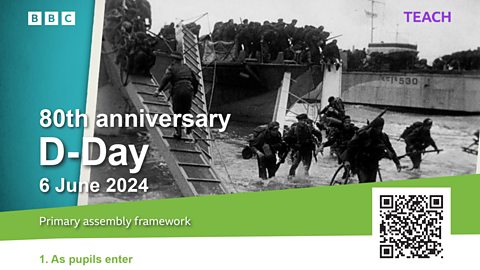
Click to display the image full-size
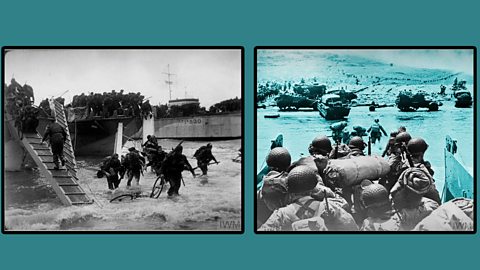
The ┬щ╢╣╘╝┼─ announces that 'D-Day has come' on 6 June 1944.
This is the ┬щ╢╣╘╝┼─ ┬щ╢╣╘╝┼─ Service - and here is a special bulletin read by John Snagge. D-Day has come. Early this morning the Allies began the assault on the north-western face of Hitler's European fortress. The first official news came just after half-past nine, when Supreme Headquarters of the Allied Expeditionary Force issued Communique Number One. This said: 'Under the command of General Eisenhower, Allied naval forces, supported by strong air forces, began landing Allied armies this morning on the northern coast of France'.
Assembly framework
1. Entry
Play the archive ┬щ╢╣╘╝┼─ News clip (above) announcing that тАШD-Day has comeтАЩ. You may also choose to display in northern France.
2. Introduction
Tell pupils that today they will be finding out about the D-Day landings тАУ a battle that took place 80 years ago on 6 June 1944 тАУ an event that is widely considered to be the turning point of World War Two, with the Allied forces successfully invading the beaches of northern France and gaining a foothold in Europe. As they watch the video, ask pupils to remember any facts and to consider why D-Day was so important.
3. The video
Play the video. The duration is 4min 16sec and the final words are: 'тАжthe possible end of the war could not come soon enough.'
4. After the video - time to talk
You could begin with some factual questions about D-Day to aid pupils' recall of the video and their understanding of it:
When did D-Day happen? (6 June 1944.)
Where were the landings? (Normandy on the French coast.)
Who were the Nazis fighting on the тАШEastern FrontтАЩ? (The Soviet Union тАУ what is now Russia and many other surrounding countries.)
Why is it called D-Day? (D-Day is a generic term that is used to describe the start of a military operation.)
What was the military codename for D-Day? (Operation Neptune was the name used for the landings on the beach and was part of the larger military operation named Operation Overlord.)
What is the word that Peter (who remembers hearing about D-Day when he was a child) says was used for the radio in 1944? (тАШThe wirelessтАЩ тАУ so called because the тАШreceiversтАЩ that people had in their homes didnтАЩt have any wires connecting to the transmitting station тАУ the transmissions are sent via radio waves.)
You could then invite a broader consideration of the significance of D-Day by asking:
- Why do you think D-Day was so important? (D-Day was a huge turning point in the war. Beforehand, the allied troops had no access to Western Europe. But after this victory, they had a way to send troops to fight back against the Germans and start to free countries like France and Belgium, who had been taken over by the Nazis. Ultimately, it allowed the Allies to take the war to Germany and defeat them in Berlin.)
5. Opportunity for reflection/prayer
you may wish to focus your reflection/prayer on intergenerational respect, remembrance and commemoration.
Related links
WW2 Clips. 'D-Day has come' audio
The ┬щ╢╣╘╝┼─ announces that 'D-Day has come' on 6 June 1944.
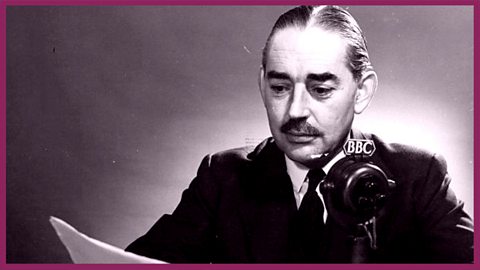
WW2 Clips. D-Day report. audio
A ┬щ╢╣╘╝┼─ reporter describes paratroops landing in Normandy on D-Day.
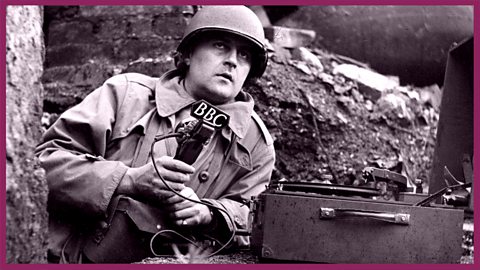
WW2 Clips. Eisenhower speech after D-Day. audio
General Dwight D Eisenhower broadcasts to the people of Western Europe in a statement prepared for D-Day.
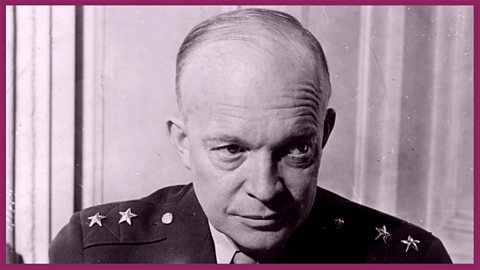
- ┬щ╢╣╘╝┼─ Teach: More D-Day teaching resources
- ┬щ╢╣╘╝┼─ Bitesize: How do we remember D-Day in popular culture?
- D-Day: A Newsround special. With the help of Newsround presenter Emma-Louise Amanshia and some of D-DayтАЩs last surviving veterans, William and Lyra explore the life-changing events of June 1944.